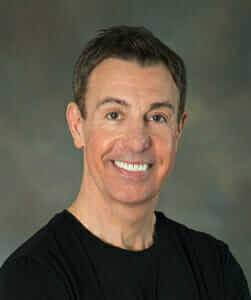I view exercise through the prism of motivation and the underlying social relationships which provide purpose for healthy living. The active men over 50 I’ve studied exhibit a strong cognitive connection between their most precious and cherished relationships and their lifestyle. They connect the dots between their social aspirations and their day-to-day attention to health and fitness. Graduations, weddings, travel, retirement and grandchildren form their “why” for healthy living. In my book Crack The Code: 10 Proven Secrets that Motivate Healthy Behavior and Inspire Fulfillment in Men Over 50, I make the case for a strong social platform as a prerequisite for sustaining a healthy lifestyle. Without strong and consistent motivation, the exercise equipment will collect dust in the basement, the gym membership will lapse after little use and those new running shoes will find their way to a back corner of your closet.
This perspective shows exercise as a means to an end, and it’s the endgame that’s the driver. A 50-plus man’s lifestyle architecture (and men and women of all ages for that matter) needs to include a balance of social and behavioral elements that consider how intertwined motivation is with diet and exercise. One example of how men over 50 can maintain positive health behaviors and make the most of their exercise routine is found in the ability to manage change.
Change is both inevitable and central to your consideration of healthy behavior and an absolute necessity when developing a realistic exercise program for men over 50. Like it or not, life is not a static proposition. As you age, changes in your social life and your body enter your life through many doors. Self-directed changes like retirement, a second career, volunteering, and travel are a result of planning and are welcomed events. Imposed change such as that brought on by physical limitations, medical conditions, or other threats on your independence can produce anxiety and threaten the lifestyle to which you’ve become accustomed. Yes, change is multifaceted but the most significant dimension of change is managing it.
So, what should you do to maintain your motivation for healthy behavior when confronted with change? How best can you approach the changes that are upon you or those that may arise in the future? What’s the key to successfully managing change? I’ve boiled it down to five key steps.
1. Forecast Your Change
It’s important to have a management plan and to think ahead. Consider planning on two levels. Level one is the ultimate big picture thinking. What significant change do you see coming in your life? How do you see your life unfolding? These and other questions represent sources of change both welcomed and imposed. Use them to build your own forecast for life change.
Once you consider the potential changes, you need to translate them into the context of priorities and your lifestyle architecture. What do these changes mean? Will the changes enhance or detract from either your motivation for healthy living or your day-to-day routines, rituals, or habits? No factor is too small.
2. Be on the Lookout for Change
Change is not always obvious. It can sneak up on you. There’s no memo that says you’ll have to change your exercise regimen next week because of an impending problem with your leg. Be cognizant of the gradual changes in life, physical, social, or behavioral. Overcome a man’s inherent resistance to visiting the doc and get yourself checked out.
3. Embrace Change
Your attitude is everything. It makes a huge difference. Experts suggest being open to try different things, staying in the moment, counting your blessings, and acknowledging what you can’t control. Reflect on the power of optimism and work to build social relationships. Similar to the physician visits, men don’t do well with their social networks. Women are much better and therefore have built-in social safety nets when it comes to managing change. Men, you need to do the same.
4. Adjust: Goals, Routines, Rituals and Habits
With acceptance and a firm understanding of how your changes reconcile with your priorities you are in a position to amend your personal goals as well as the routines, rituals, and habits that comprise your lifestyle architecture. Try out new routines and remember that no tactic is too small or insignificant to give you an edge.
5. Evaluate and Redefine as Necessary
Goals are a continuous work in progress. Evaluating the outcomes of your goals and making further adjustment is part of the management process. Continuous improvement, refinement, and redefinition are standard procedure.
Now that you’ve considered what lies ahead and are prepared to manage the aging process it’s appropriate that we review the fundamentals of a healthy lifestyle and exercise routine.
To get some insight on where to start I posed the question to Dr. Daniel Hyman. He is Board Certified in Internal Medicine, Head of the Division of Internal Medicine at Cooper University Health Care and serves as an Associate Professor at the Cooper Medical School of Rowan University. Dr. Hyman recommends the following strategies:
- See your physician for an evaluation.
- Eat sensibly, adopt a low-fat diet that cuts the starches and focuses on lean meats.
- Limit alcohol and caffeine intake.
- Avoid sugary drinks.
- Get adequate sleep.
- With your physician’s approval, you embark on an exercise program that includes stretching before every work-out, and starting with a slow routine that includes aerobic exercise like biking or a treadmill, or sensible weight training which builds up to a thirty to forty-minute workout, five times a week.
While change lies at the heart of the aging process it need not be an obstacle to a healthy lifestyle. With some planning you can maintain your motivation and maintain an exercise regimen that provides the workout you need to win your endgame.
Louis Bezich is a healthcare executive, husband, father, grandfather, part-time professor, and author with a passion for health and fitness. His devotion is a result of a lifetime of experiences that included divorce, single parenthood, and professional challenges where diet and exercise became the antidote that carried him through the tough times and ultimately enabled him to flourish personally and professionally. His first book, Crack The Code: 10 Proven Secrets that Motivate Healthy Behavior and Inspire Fulfillment in Men Over 50 is available now.






